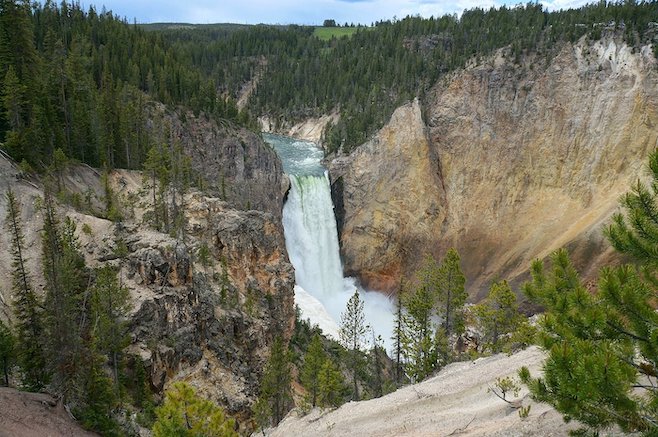The Grand Canyon
The Grand Canyon of the Yellowstone is an awe-inspiring natural wonder that stands as a testament to the incredible erosive power of the Yellowstone River. Stretching over 24 miles, the canyon boasts depths ranging from 800 to 1200 feet and widths that vary from 1500 to 4000 feet at certain points. From various vantage points, visitors can marvel at the Lower Falls as they plummet 308 feet into the canyon, or the Upper Falls as they cascade down 109 feet. What sets this canyon apart is its unique combination of steam vents, geysers, and mineral strains that adorn its walls. Over thousands of years, fluids have percolated upwards, altering the chemistry of the rocks and imbuing them with vibrant hues of yellow, red, white, and pink. It’s a picturesque setting that has been shaped by the forces of nature.
Grand Prismatic Spring
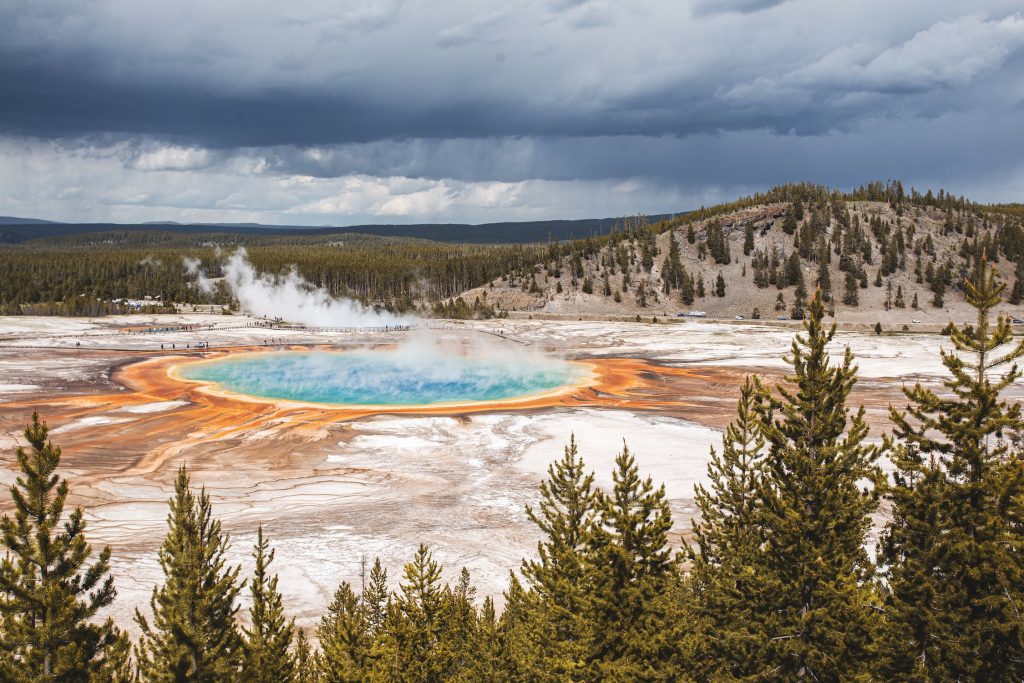
The Grand Prismatic Spring, situated in Yellowstone National Park, is a marvel of nature that stands as the largest hot spring in the United States and the third largest in the world, following Frying Pan Lake in New Zealand and Boiling Lake in Dominica. Nestled in the Midway Geyser Basin, this natural wonder was first discovered by geologists during the Hayden Geological Survey of 1871, who were awed by its vivid coloration. The spring’s hues mirror the spectrum of colors that emerge from white light when dispersed by an optical prism, ranging from fiery reds and oranges to sunny yellows, lush greens, and tranquil blues.
Old Faithful
Nestled within the awe-inspiring Yellowstone National Park in Wyoming lies a natural wonder that erupts with clockwork precision – Old Faithful. Our stay at the Inn, situated in close proximity to this geological marvel, was a splurge well worth the investment after the long journey to reach it. From the safety of the Inn’s outdoor terrace, we were treated to a breathtaking display of Old Faithful’s eruption, perfectly timed to the minute as indicated by the Inn’s display clock. It’s no wonder this geyser earned its moniker – Old Faithful rarely disappoints.
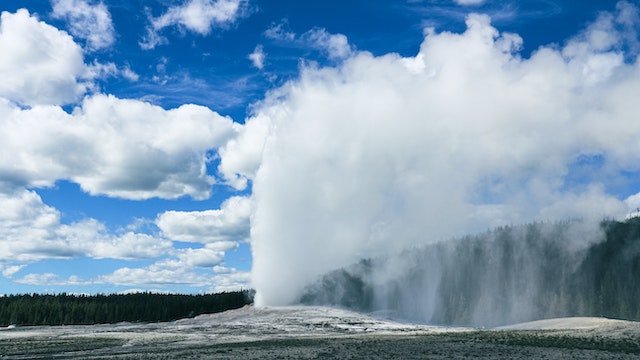
Lamar Valley
This expansive valley is a thriving habitat for a diverse range of wildlife that have made the park their permanent residence. However, the timing of your visit can make all the difference. During our midday excursion, we were fortunate enough to spot a handful of bison and elk, but our sights were set on encountering bears. It is my professional opinion that the likelihood of such an encounter is significantly greater during the early morning or evening hours, before the sun’s warmth lulls them into a state of slumber and they retreat to the shelter of the forest for their midday rest.
Upper Geyser Basin
Yellowstone National Park’s Upper Geyser Basin is undoubtedly the park’s most iconic attraction. It is home to the world-renowned Old Faithful geyser, along with numerous other geysers that make it the emotional nucleus of Yellowstone. The area is bustling with activity, offering various hotels and amenities that make for a comfortable stay. Its central location also makes it an ideal base for exploring the rest of the park. To fully experience the three main geyser basins – Upper, Midway, and Lower – plan to spend at least two days in the Upper Geyser Basin. This will allow you to witness all the predictable geysers and increase your chances of seeing the unpredictable ones. Some geysers may erupt at night or simultaneously with others, and several have a limited window of activity. Allowing for multiple leisurely days will increase your chances of seeing them all. The Old Faithful Visitor Center can assist in estimating the eruption times to help plan your days accordingly. While the pathways and boardwalks of the Upper Geyser Basin may not provide a wilderness experience, they offer a unique opportunity to witness the area’s fascinating geological and hydrothermal features. Bison sightings are common in the area, with the occasional chance of spotting bears and other wildlife. It is imperative to keep a safe distance from these wild animals, as they may attack if provoked or uncomfortable. Remember, it is never appropriate to take selfies with them.
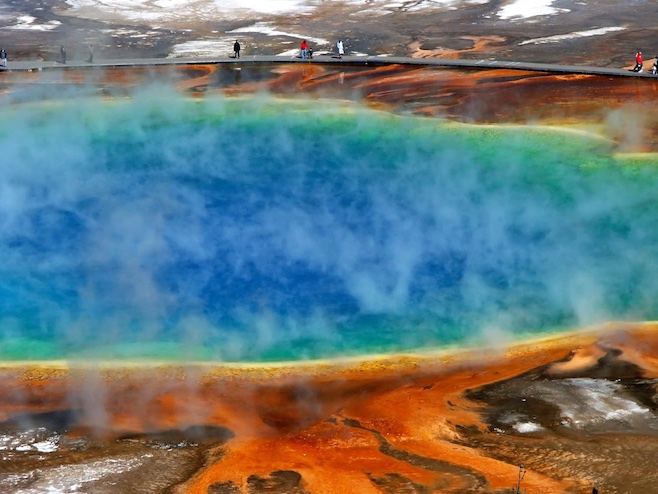
Artist Point
Artist Point is an awe-inspiring destination that promises to take your breath away. The multicolored layers of rocks forming the cliffs and walls of the Canyon are a sight to behold, leaving visitors utterly speechless. The waterfall, cascading down an impressive 300 feet into a river of Rapids, is truly magnificent. A visit to Yellowstone would be incomplete without experiencing the unparalleled beauty of Artist Point.
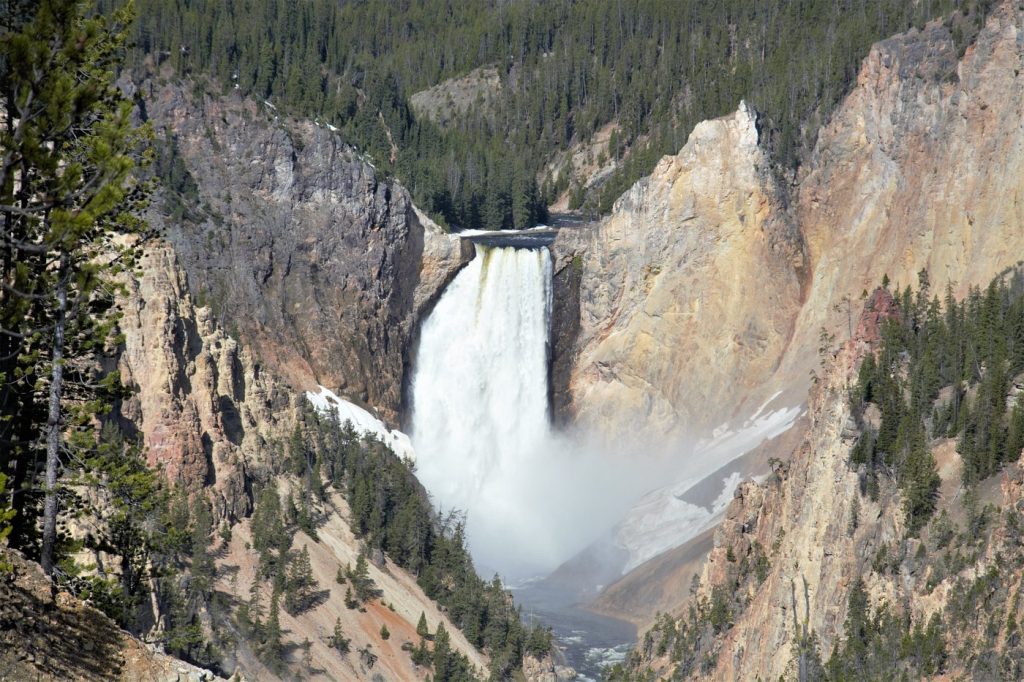
Yellowstone Lake
Located atop a colossal cauldron of molten lava, this lake is subject to a cataclysmic eruption every 625,000 years. The primary highway skirts the northern edge of the lake and spans a bridge that marks the beginning of Yellowstone.
Lower Yellowstone River Falls
The Lower Falls, situated in the Grand Canyon of Yellowstone near Canyon Village, boasts a remarkable geological feature with a lava lip dating back 590,000 years. This natural wonder is the largest volume waterfall in the Rocky Mountains, towering at 308 feet, almost twice the height of Niagara Falls. The sound of the cascading water can be heard from a distance, and the sight is truly breathtaking. A trail leads to the edge of the falls where visitors can witness the water plunging over the edge and down to the river below. The descent can be challenging with steep and wet conditions, often crowded with tourists. However, the view from the top is equally stunning, making the Lower Falls one of the most popular photographic spots in the park.
